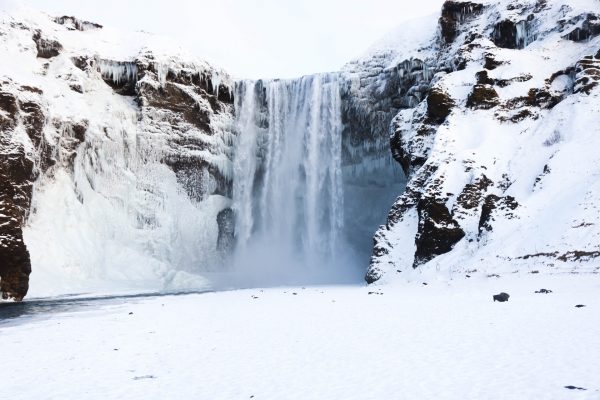The february weather in Iceland is still considered winter, and travelers should expect chilly temperatures, precipitation and strong winds. The average temperature during this month is around -1°C (30°F) with occasional dips to as low as -5°C (23°F) and highs around 4°C (39°F). The weather conditions can be unpredictable, so visitors should be prepared for a mix of snow, rain and even sleet. Wind chill can make the temperatures feel much colder than they actually are, so it’s important to have warm clothing layers and gear, such as a good quality jacket, gloves and hat. February is also a month of increased daylight with about 6 hours of daylight, which makes it a great month for winter sports, outdoor activities and Northern lights watching.

Is February a good month to visit Iceland?
February is a particularly enchanting time to visit Iceland. The milder weather, with average temperatures ranging between -1°C (30°F) and 4°C (39°F) may surprise some visitors. It’s a prime time to see the Northern Lights, as the darkness provides the perfect backdrop for the aurora to dance across the sky. The country is also covered in a blanket of snow, which adds to the natural beauty and makes it a great time for winter sports and outdoor activities. With about 6 hours of daylight, visitors can also enjoy the snow-covered landscapes and frozen waterfalls. Overall, while any time of the year can be a good time to visit Iceland, February has a unique charm and offers a variety of activities to enjoy. It’s a great time to experience the Nordic winter, with its beautiful landscapes, Northern lights and winter activities.
How cold is Iceland in February?
February is considered to be one of the coldest months in Iceland, however, the average low temperature is around -1°C (30°F) and the average high temperature is around 4 degrees Celsius (39 F) which is probably not as cold as one might expect. These temperatures are still considered chilly and visitors should be prepared with warm clothing and gear. However, it’s worth noting that the weather conditions can be unpredictable, and temperatures can fluctuate, so it’s important to be prepared for a range of weather.
Will there be snow in Iceland in February?
In February, Iceland’s average temperature is 0.4°C (32,7°F) and the average sunshine is 52 hours. The average precipitation is 72 mm, with mostly snow expected in most parts of the country. February is the perfect month to experience the Nordic winter and all its beauty, with snow-covered landscapes and frozen waterfalls.
Is it Dark in Iceland in February
February is known for its long, dark nights, and short days with limited daylight. Although the days are short, it’s important to note that each day gains an extra nine minutes of light, which makes it a great time to experience the gradual increase in daylight and the natural beauty of Iceland’s winter landscapes.
In conclusion, February is a great time to visit Iceland for those who are looking for winter activities, Northern lights viewing and snow-covered landscapes. The weather conditions are chilly, with average temperatures ranging between -1°C (30°F) and 4°C (39°F) and a high chance of snow and rain. Visitors should be prepared for unpredictable weather and dress warmly. With an average of 6 hours of daylight and 9 minutes more each day, visitors can enjoy the gradual increase of daylight, snow-covered landscapes and frozen waterfalls. It’s a prime time to see the Northern Lights, with long hours of darkness and the possibility of clear skies. Overall, February is a magical time to experience Iceland’s winter wonderland and all it has to offer.
